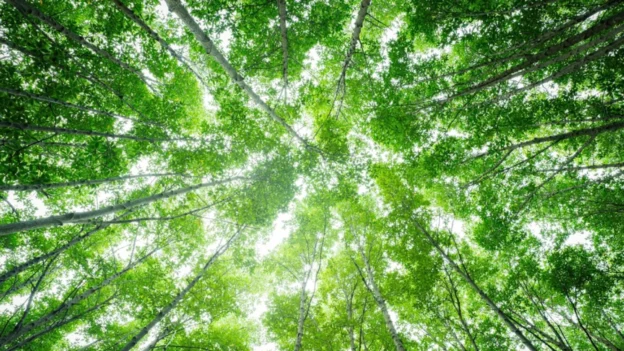Over the last decade, many of the planet’s great green lungs, such as the Amazon, Congo and Southeast Asia, have experienced forced rejuvenation. This means that, due to fires, logging and other human disturbances, old forests are being replaced by young forest stands. Although these new forests are growing rapidly and absorbing atmospheric CO₂, they are failing to match the capacity for storage capacity of older ecosystems. storage capacity of older ecosystems.
Young forests, less carbon stored
According to an international study led by Simon Besnard of the GFZ Center for Geosciences, around 140 million tons of carbon are lost each year in aboveground biomass due to this forest replacement.
The key is age: mature forests, with complex structures and rich soils, conserve carbon for centuries. In contrast, younger forests have not yet reached that capacity.
The science team combined satellite imagery with a new dataset called GAMI v2.0, which provides high-resolution forest age maps. This made it possible to identify regions where forests are naturally aging, such as parts of China, Europe, North America, and those where human pressure is rejuvenating them at a rapid rate. These dynamics have direct implications for climate change mitigation.
Capturing fast is not conservation
Although young forests sequester carbon at a faster rate, their total sequestration capacity is limited. Primary forests, on the other hand, continue to store carbon, even at slower growth rates.
The soil and dead biomass in these ecosystems contain large amounts of carbon that accumulate over time.
What is needed to avoid a major loss?
The report notes that conserving old-growth forests is vital to curbing net carbon emissions. It also proposes strategic management of secondary forests to maximize their development into more mature stages. This includes policies that limit deforestation, promote ecological restoration and allow ecosystems to age naturally.
The authors of the study in Nature Ecology and Evolution conclude that finding a balance between disturbance, regeneration and conservation will determine the role forests will play in the face of global warming. global warming. Without a clear strategy, forests could go from being allies in the climate fight to becoming net sources of emissions.
Source and photo: GFZ Center

